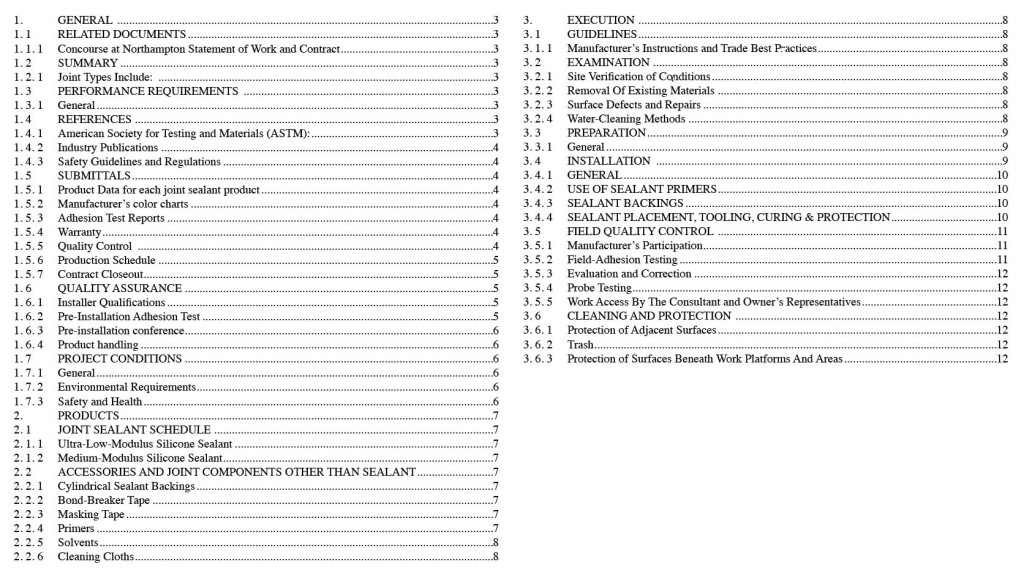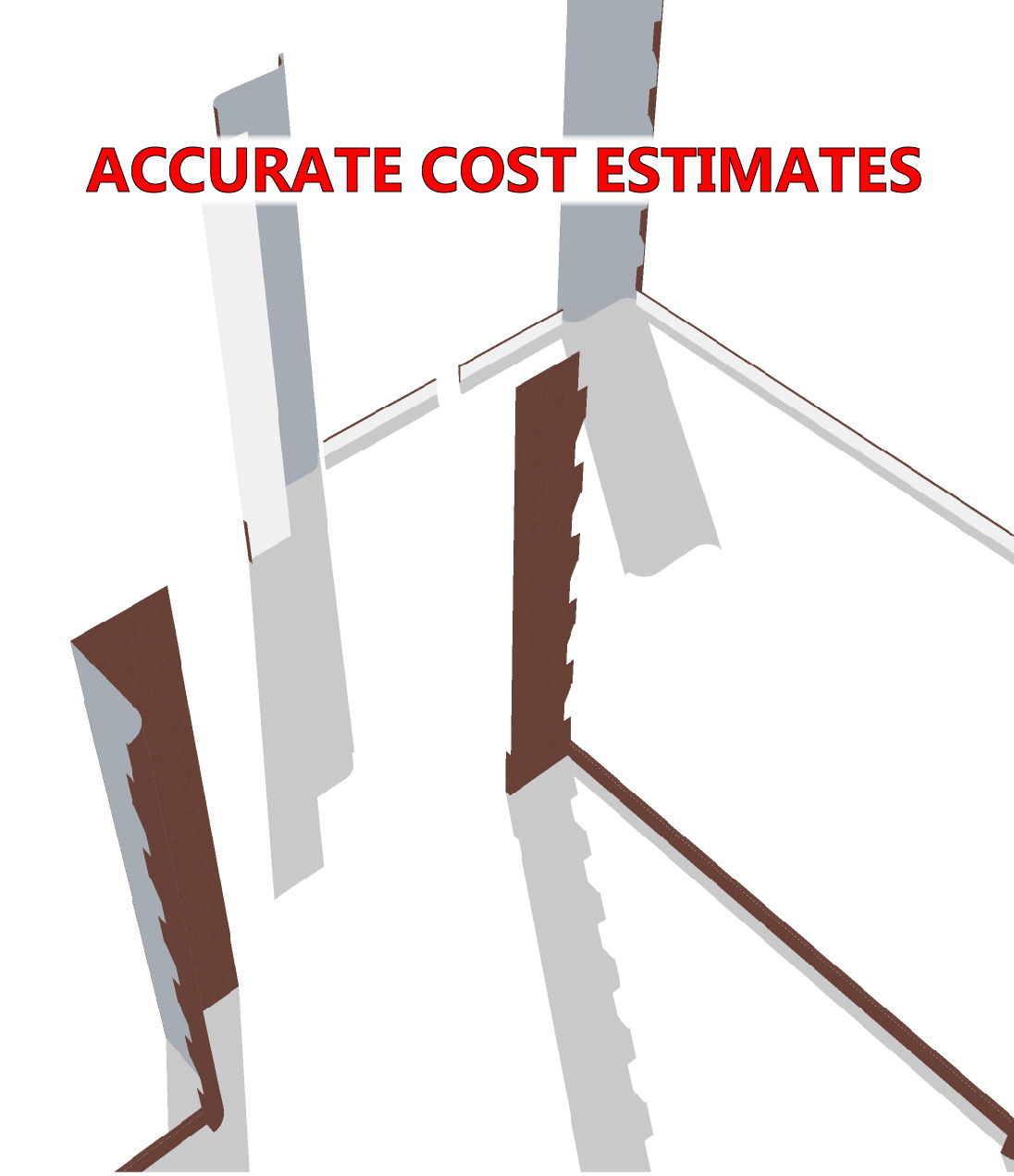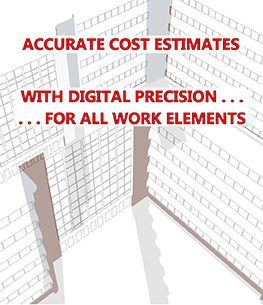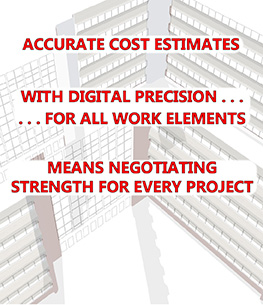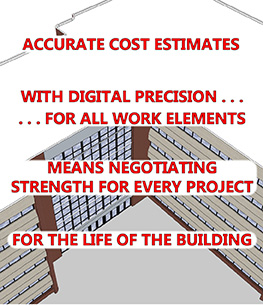Step 1 – Commercial Building Survey
Step 2 In The Commercial Building Restoration Project
THE STATEMENT OF WORK AND THE SPECIFICATIONS
Step 3 – The Bid Process
Step 4 – Project Management & Execution
Once the analysis is complete a Statement of Work for everything the commercial building envelope needs can be written. At first this can be done without regard for budget because eventually, if the building’s value is to be maintained, all the work that’s needed will be accomplished. In time all the funds will be allocated if the building is to keep its value. The original, full SOW is the basis for work that may be done in phases, sometimes over a period of several years or budget cycles. The owner’s priorities and budget establish what’s done during each phase.
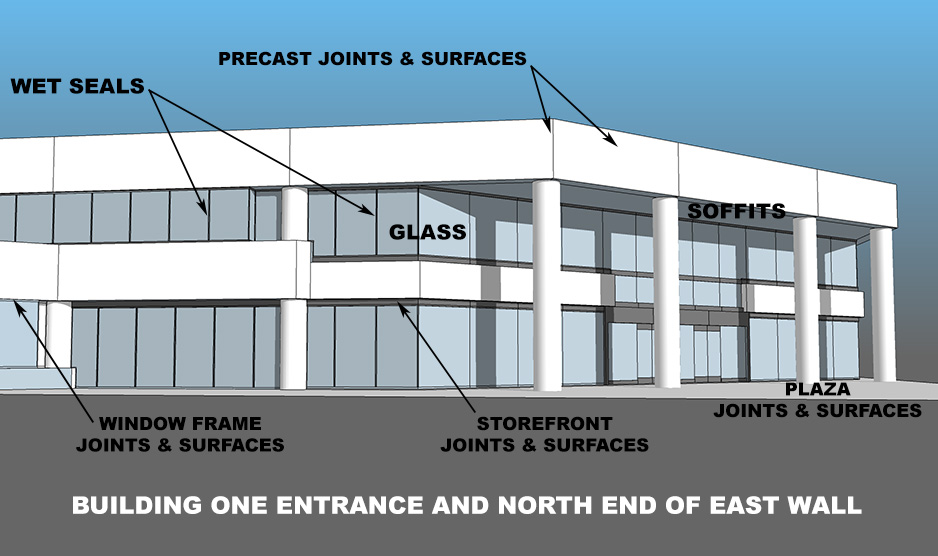
The most important criteria for the Statement of Work is that it identify and describe all that has to be done to complete the project that will incur costs to the contractor or the owner. A good Statement of Work is clear and unambiguous, well organized, well written and adequately illustrated, progressing from one topic to another in such a way as to make them all readily comprehensible. If a Statement of Work is missing any important information about the project or if it’s unclear about which party is responsible for aspects of it, conflicts can arise.
Sealant Restoration may be the first category in the “Services” section of the Statement of Work. (Sealant is often referred to as caulk but caulk is actually what is used in bathrooms and other interior spaces. Sealant is used to seal exterior joints.) Subsequent service categories may be Surface Repair, Waterproofing or Painting and Coating. Other services include concrete repair, deck repair, EIFS repair, natural stone restoration, brick repair and tuck-pointing, Terra-cotta restoration, dimension stone repair, glass restoration and deck re-surfacing. It’s not uncommon for a dozen separate services to be included. Fortunately, most restorations contractors are qualified in multiple trades so it typically isn’t necessary to award multiple contracts.
JVS Building Services provides Statements of Work that include the following sections:
1. Building & Project Description
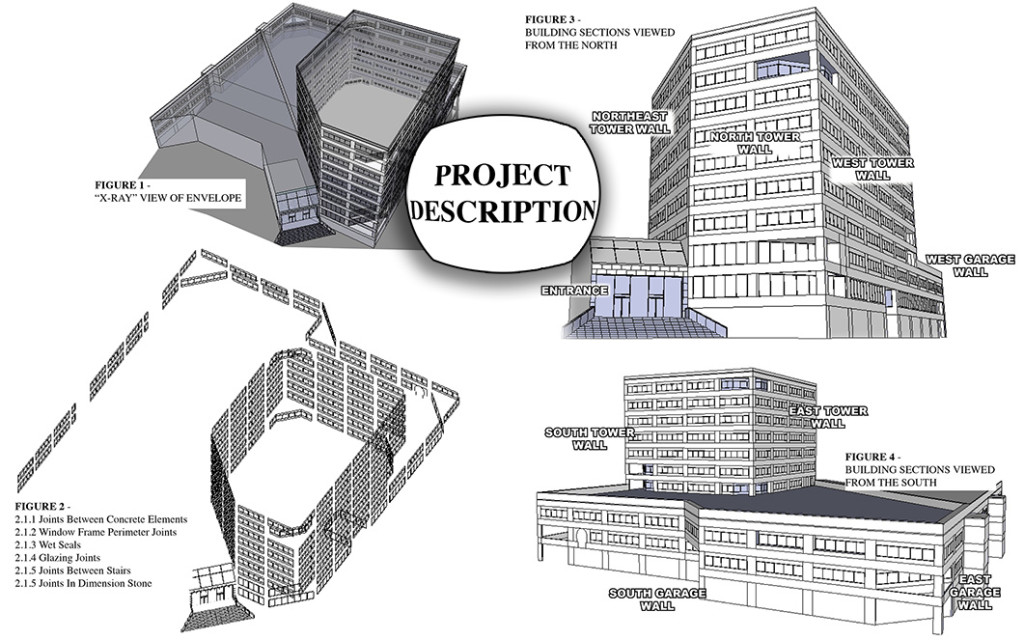
Section One is a narrative of what is known about the building and the work that is needed. The type of construction, style and age of the building, maintenance / restoration history, previous uses, current use and tenants, current condition and historical value are some of the things that can be included in this section. (This page on the Delaware Trust Building in Wilmington, Delaware is an example of a typical description for a building with historical significance.)
2. Services Needed
Section Two, “Services”, lists the services that are included, for example: “Glass to Frame Interface (Wet Seals)”, “Window Frame Perimeter Joints”, “Waterproofing”, etc. Providing this information in its own section at the beginning of the document gets all parties oriented to the nature of the project at the start. The services a contractor provides are those of his trade. Everyone involved, from the building manager to the laborer knows what’s required of them when the trade services are known.
Carefully prepared, illustrated descriptions of the services should be provided. Clarity and the elimination of ambiguity is the goal so that everyone doing the work and all with an interest in it, even those who come to the project while it is in progress, will know what’s to be done at all locations. If these criteria are adhered to misunderstandings are eliminated and cost estimates are more likely to be accurate. There should be no doubt in regard to what it means to perform any service in the contract and where on the building it is to be completed.
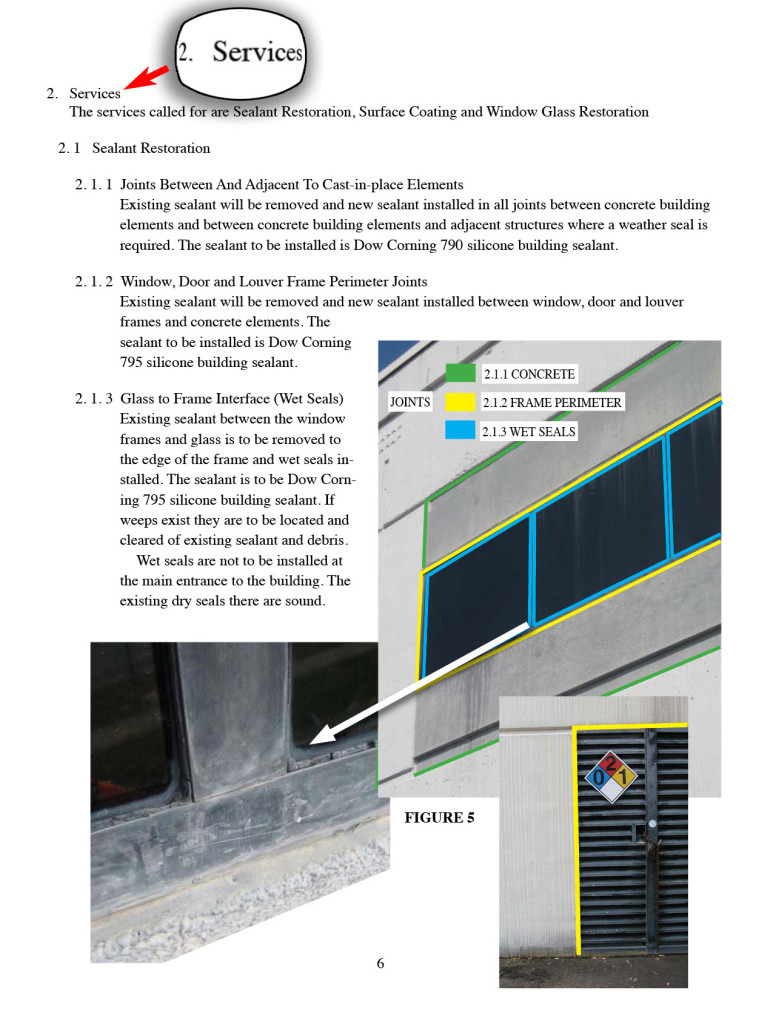
3. Order of Work
In restoration projects the order in which tasks are to be completed should be specified. It needs to be clearly understood by all before the work is bid and the production schedule created. To illustrate this, consider how the application of penetrating sealer can affect joint sealant. If a building needs joint restoration there may be places where the existing material is separated from the substrate. If a penetrating sealer were applied to the panels before the joint sealant is replaced the penetrating sealer could find a path to the joint substrate where it will significantly inhibit adhesion of the sealant. Therefor, sealant has to be installed and allowed to cure before penetrating sealer is applied. If the services for the same project include restoration of glass, window frames or other surfaces, the order in which those tasks are completed has to be arranged such that the processes don’t interfere with each other.
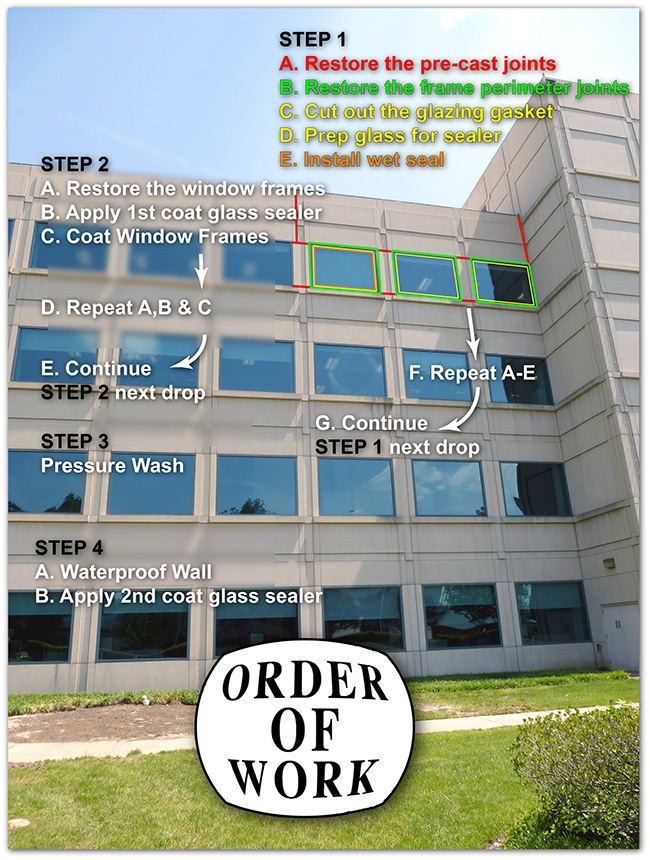
4. Work Items & Costs, i.e., the Bid Form
Section Four in the Statements of Work written by JVS Building Services is a complete list of all work items as they will be bid and also as they will be submitted for payment so it is both the Bid Form and it includes all the items that will become the Schedule of Values. The individual items are specific portions of the building and the restoration services to be completed on them. Organizing the bid and the Schedule of Values in this manner serves very important purposes for the contractor and the owner. Breaking the bid down gives the owner the cost information he needs to decide what to complete during the current project and what to defer to the future. For the contractor it explicitly identifies each task the owner has decided to include in the project and it facilitates incremental billing as the job progresses. The last portion of Section 4, “The Bid Form”, compiles the cost information into Itemized Costs for each of the services (or trades), which is another way for the owners project manager, and the contractor’s, to analyze the project.
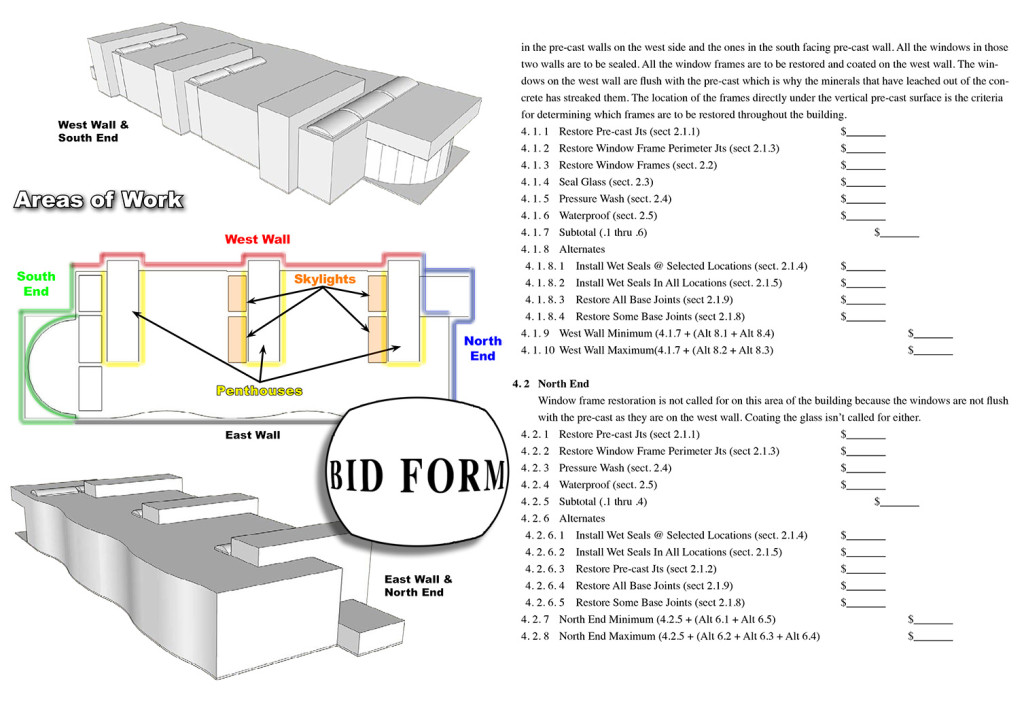
5. Specifications
Section Five lists and specifies or describes the materials to be used for each of the services and the methods to be utilized to apply them.
6. Submittals
7. Quality Control
The measures listed in this section are a function of the services called for in Section 2.
8. Contractor’s Requirements & Provisions
These are the things that are required of the contractor and that he is expected to provide. Unless certain things are spelled out it’s possible that they won’t be provided by either the contractor or the owner. Water, power, waste disposal and storage space for materials are some examples. In the Statements of Work written by JVS Building Services a critcal issue addressed in this section is safety. Contracts will specify that the contractor has to operate safely and comply with all laws and standard practices. Repeating that and requiring the contractor conduct a Safety Survey of the site and write a report attesting to his recognition of the requirement is an important function of this section of the Statement of Work. Reviewing it during the pre-construction meeting ensures that the contractor has taken steps to ensure the safety of his crew, the building occupants, the public and the property.
9. Owner’s Requirements & Provisions
This is what is required of the owner and the things he is expected to provide. Examples are power and the power receptacle, water, trash disposal*, access and possibly material storage. (Unused space in the building, particularly if it is unfinished, may be a better location for the contractor’s staging area than a trailer or storage container on the property outside.)
*In new construction the only thing the contractor can leave on the site are the material and equipment he has added to the building. In restoration work the sealant and other material that was there and had to be taken out of the building was the owner’s property before the project started. As such it is fair that the owner allow the contractor use of on site trash receptacles to dispose of it, which typically costs the owner nothing anyway.
10. Warranties
Section Ten of the Statement of Work calls for warranties from the contractor for his labor and from the materials manufacturers. The Services identified in Section 2 and the Work Items that are part of the Bid Form (Section 4) have an important relation to the warranties. Often, the entire property isn’t included in a restorations project. If the managers who worked on the project are unavailable when the warranty is invoked Sections 2 and 4 of the Statement of Work, the Schedule of Values and the invoices are a clear record of the services that were performed and where they were completed on the building. Without such a record it can be difficult to determine where the work was done and therefor whether or not a warranty issue exists.
11. Addenda (Drawings, Specifications)
Specifications for the services called for in Section 2 will be provided as Addenda to the scope of work. These are important for many reasons not the least of which being how they eliminate disagreements and misunderstandings regarding all the specifics of how a service is to be rendered. For example, subsurface preparation for joint sealant doesn’t necessarily require use of a primer and if the building engineer asks about it the specification provides the source for the answer. Matters regarding workmanship and execution are covered in the specification and so are quality control measures including in-process testing and submittals.

Modern 3D CAD applications have benefited the estimating process. Desktop publishing utilized in the creation of technical documents such as Statements of Work makes them clearer, easier to use and less likely to be misinterpreted. Architects and professional engineers and the associations they form have been slow to incorporate desktop publishing tools into their work flows for Statements of Work and specifications. Consultants who use them to their full potential are producing documents that are easier to understand. The result is projects that are more efficiently implemented.
SPECIFICATIONS – STEP 2.2
Contractors have to know what’s required of them. The Statement of work tells them what to do. Specifications tell them, specifically, what materials to use and how to apply or install them. There are three types of specifications: Performance, Prescriptive and Proprietary. A Performance Specification is based on operational requirements of a component or installation method. A Prescriptive Specification prescribes the materials that must used by providing detailed descriptions of all the products required for the tasks covered by the specification in conjunction with the structural and performance requirements of each product. Proprietary Specifications eliminate variation by calling for a single approved product for any particular installation. (The article, “Types of Construction Specifications“, at archtoolbox.com provides additional details on the subject.)
Materials manufacturers provide specifications for consultants and design professionals to use for new construction as well as restorations. These documents are comprehensive but they aren’t suitable for any specific project or application. To see why that’s true, review the Table of Contents below for the sealant specification for a recent pre-cast concrete building sealant restoration project. The details in many, if not most of the sections that make up the specification are unique for every project.
